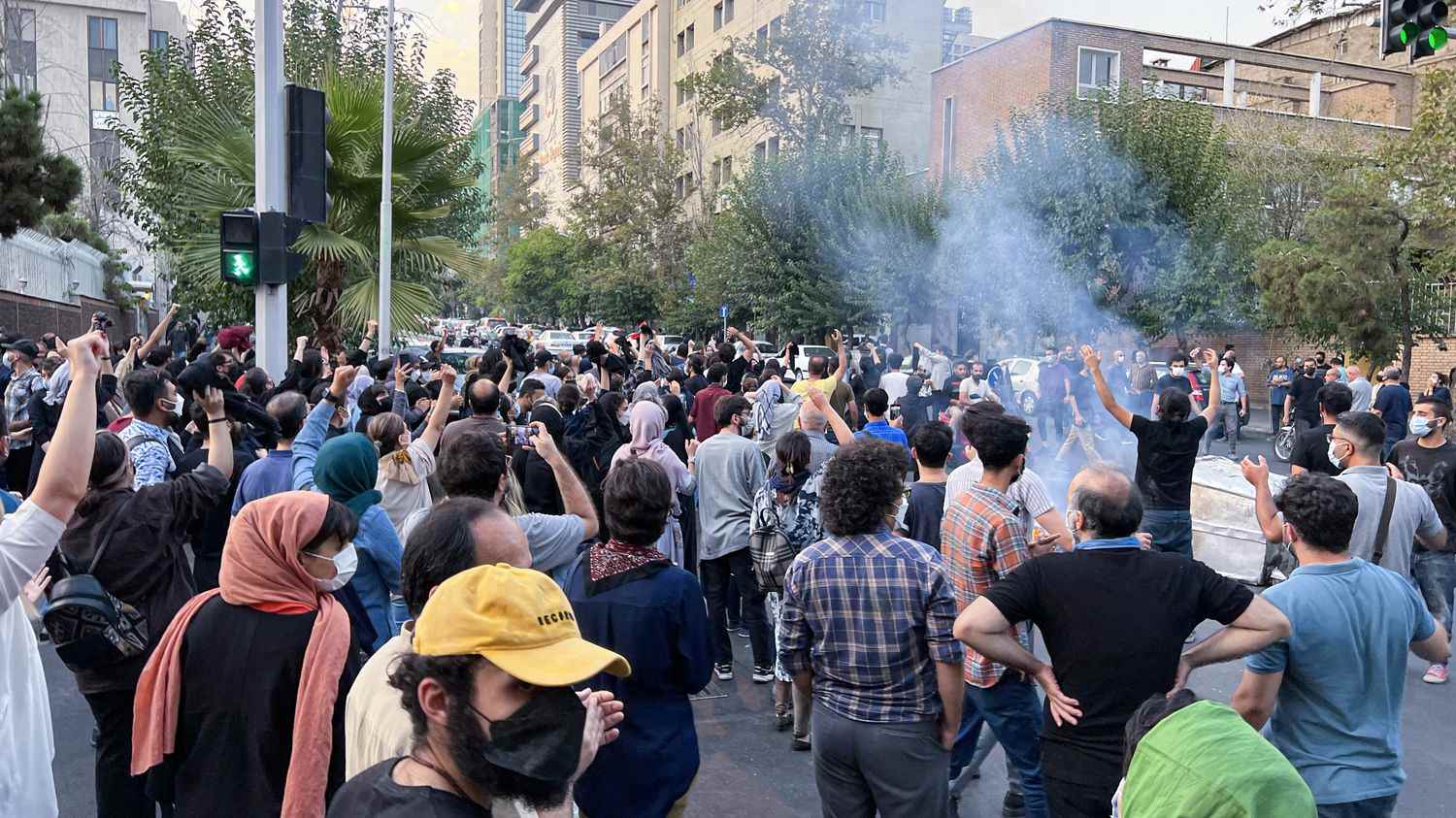“Woman! Life! Freedom!” This slogan from Iranian Kurdistan is now found on many signs across the country, in the demonstrations organized after the death, on September 16, of Mahsa Amini, 22, at the hands of the morality police in Tehran.
Faced with the authorities who deny any violence or negligence, rallies are multiplying in Iran, in particular to protest against the obligation to wear the veil. At least eight people died in clashes with the police, according to a report released Wednesday, September 21.
>> Five questions about the suspicious death of Mahsa Amini which sets Iran ablaze
In order to better understand the scope of this new explosion of anger, franceinfo interviewed historian Jonathan Piron, specialist in Iran and researcher associated with the Gresearch and information group on peace and security (Grips).
Franceinfo: Large demonstrations have already shaken Iran at the end of 2017 and more recently in 2020, with mainly economic reasons. Can Mahsa Amini’s death push more Iranians into the streets?
Jonathan Piron: With events ongoing, it is still very unclear whether this will turn into a real uprising across the country. But there is something new compared to previous protest movements. This mobilization seems to really affect different categories of the population, in an expression of rage and anger that is not only directed against a policy that is put in place by the Iranian regime, for example the increase in fuel prices…
Here, it is really the expression of a lack, of a real anger against the very symbols of the regime of the Islamic Republic, which are in particular the question of wearing the veil and the instruments of repression and control. These have obviously existed since the origins of the Islamic Republic, but they have really been reactivated since the accession to power of the President Ebrahim Raisi, in August 2021.
What circles usually demonstrate in Iran? Do we find the same profiles as during the last popular movements?
It all depends on the protest logic. In 2020, in Tehran, it was all those who depended on the informal economy, without protection against rising gasoline prices. In 2021, in the south of the country, it was mainly farmers who mobilized to demand better water sharing. Often the regime tries to put a lid on the protests, helping some groups and not others. This time, that’s not the case.
“Anger crosses the different classes of the population and it is quite unprecedented.”
Jonathan Piron, historianat franceinfo
Iranians are exhausted by years of sanctions, by the pandemic, and by the economic crisis that has worsened since the American withdrawal [de l’accord sur le nucléaire iranien en 2018] and new penalties. The middle class is approaching the precarious class, and it will be difficult for the regime to pit them against each other.
Popular anger is very visible on social networks in Iran, despite censorship. How does it work?
Apart from Instagram, which remains under threat, most social networks like Facebook, YouTube, Twitter are banned in Iran. Which is very hypocritical when you know that the regime’s top officials, including Ayatollah Ali Khamenei, communicate regularly on Twitter. But the population still has access to it by using circumvention means, such as VPNs [un logiciel qui permet de naviguer sur internet de manière anonyme]. Information sharing is mainly done on WhatsApp and Telegram, where videos of the protests are currently spreading.
In Moalem Boulevard, Rasht, baton wielding riot police chase protesters but are quickly forced into retreat as protesters fight back amid the sound of gunshots in the background, on day five of protests in Iran over the death of Mahsa Amini.pic.twitter.com/g5nsLU6AZp
— Shayan Sardarizadeh (@Shayan86) September 21, 2022
For me, these images have a certain strength because they have an impact on mentalities. They precisely show people getting together, burning their veils in public, cutting their hair… It leads to the establishment of a new repertoire of protest, it shows that we can do it. There is a kind of leaden screed that breaks with the transmission of these images.
What pattern could the regime follow in the face of this popular protest?
For the moment, there is a form of wait-and-see attitude, even if the repression has already been very violent in places. First of all, cities, urban centers and university campuses are moving. Especially in Kurdistan, which is Mahsa Amini’s home region.
“Usually, the regime cuts the Internet in order to stifle the mobilization. It can last one or more days, the time that the power acts without the images of violence circulating and feeding the anger of the population.”
Jonathan Piron, historianat franceinfo
It’s really about pulling back the curtain on how the regime is going to repress Iranians and ultimately extinguish any hint of protest.
